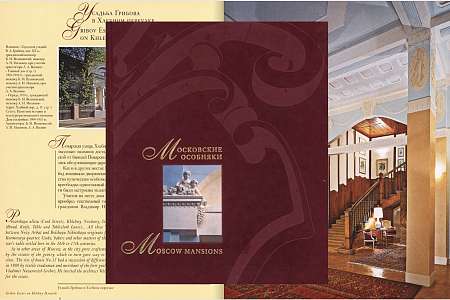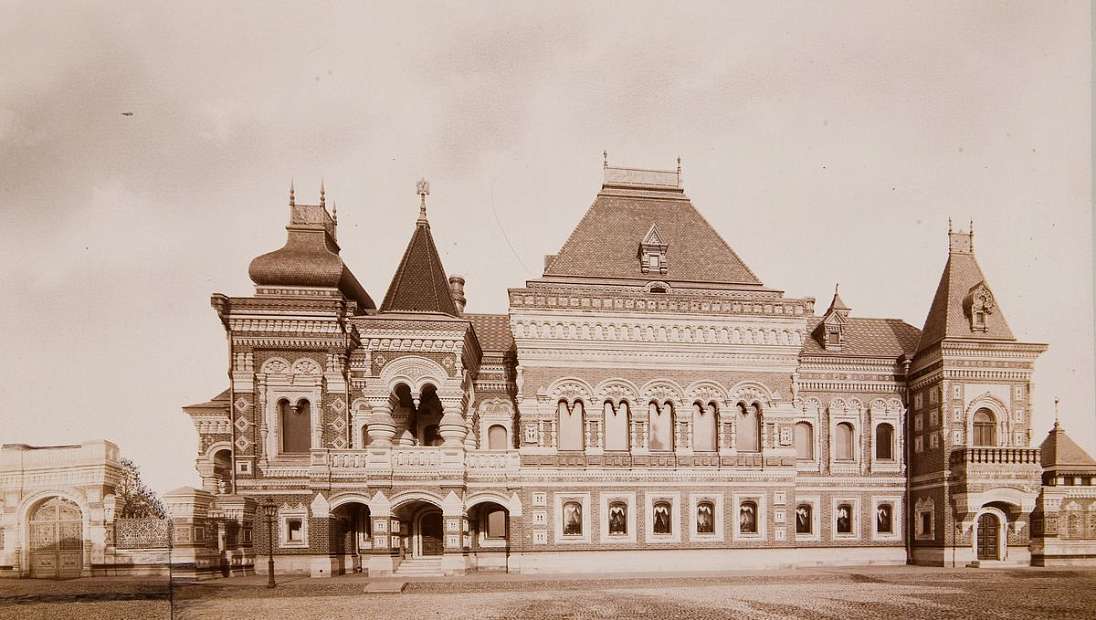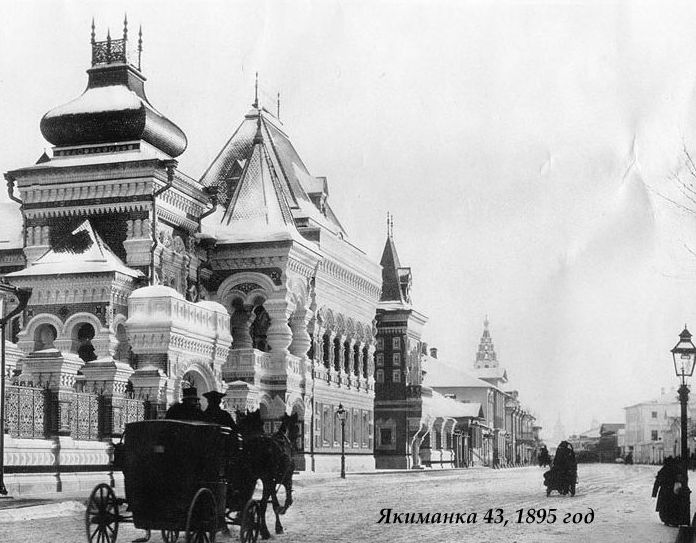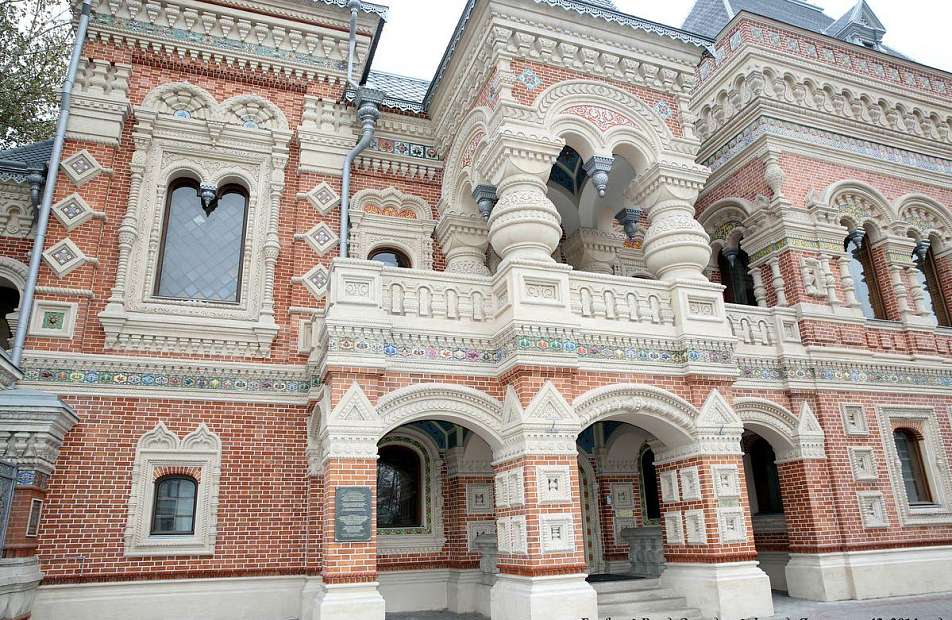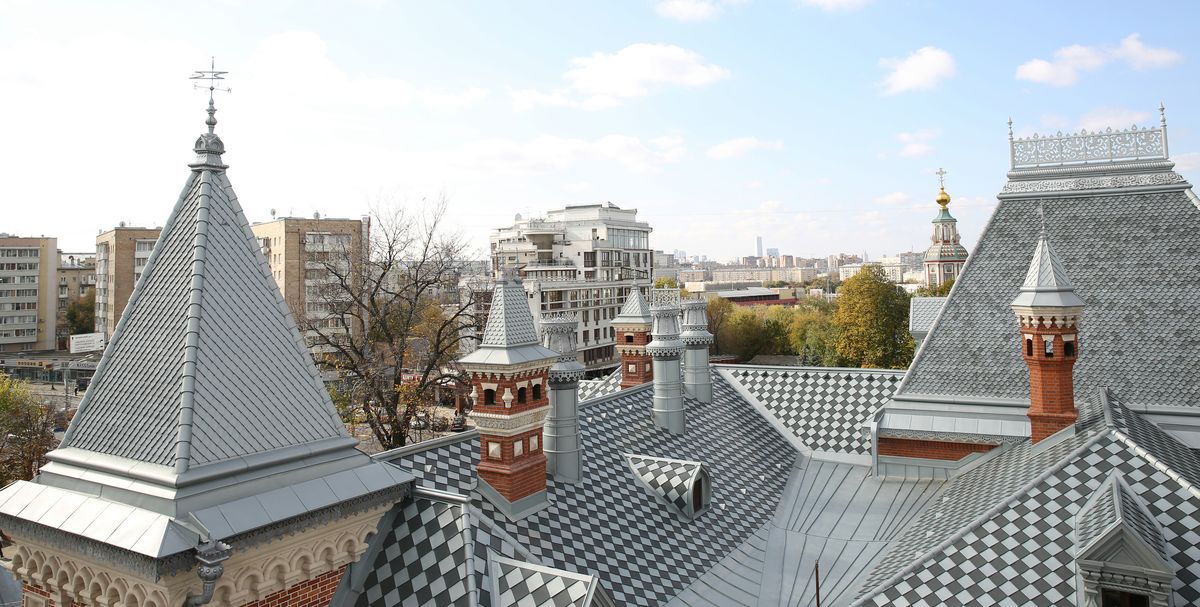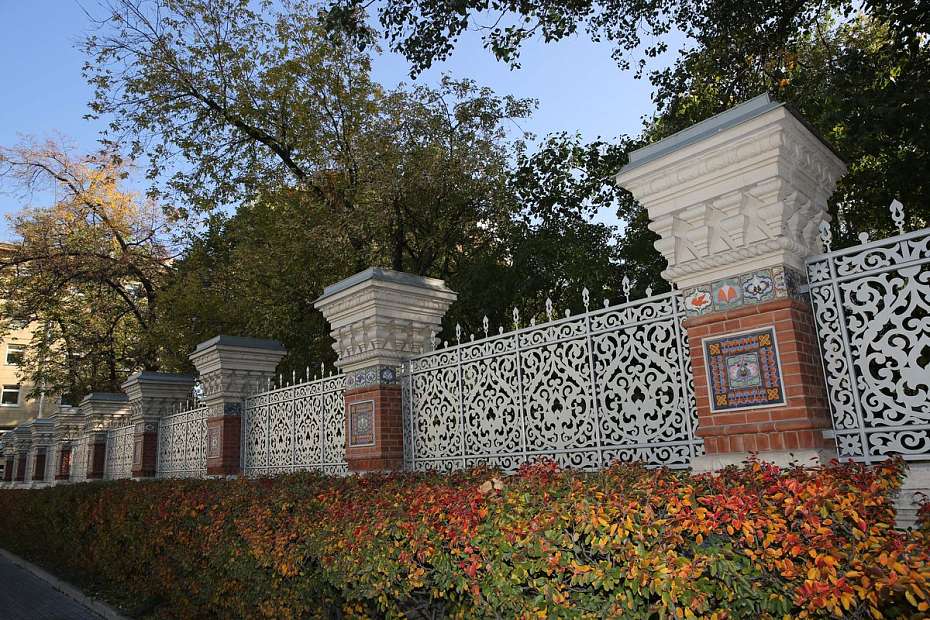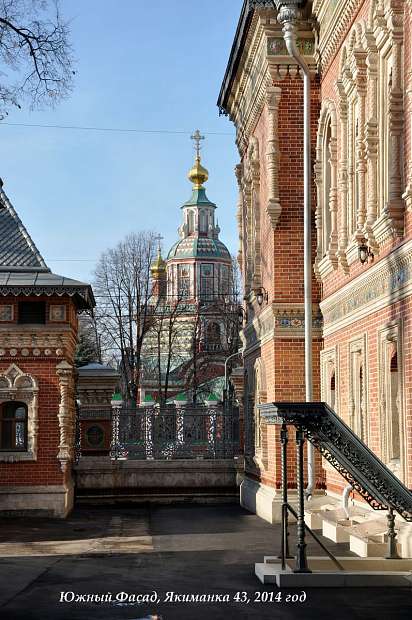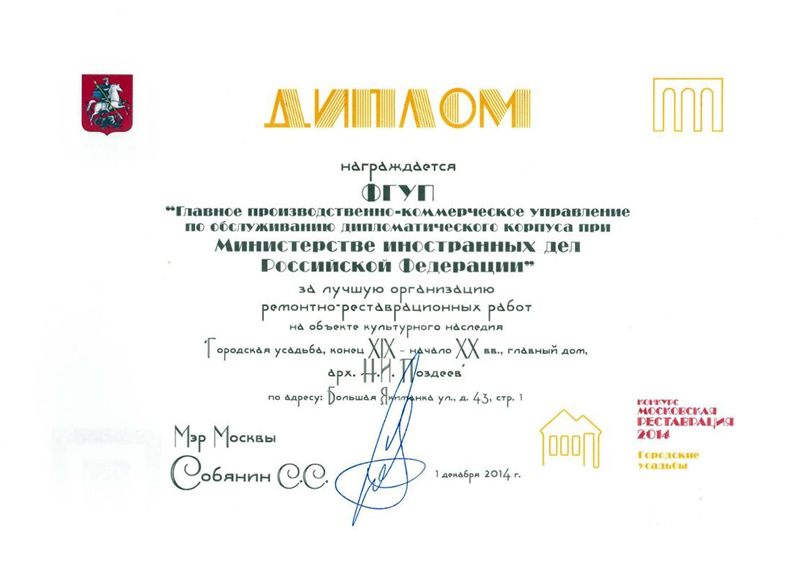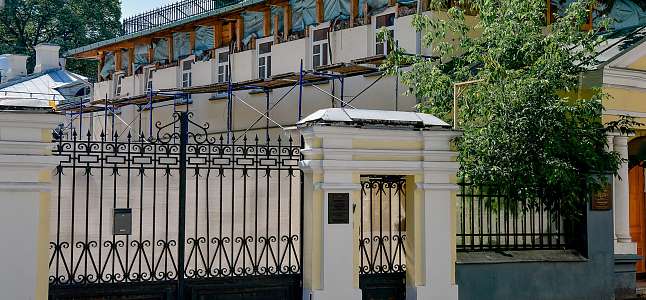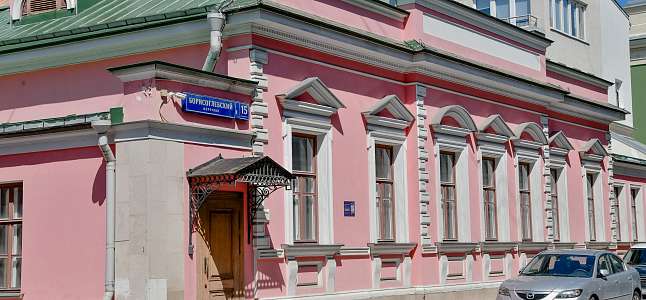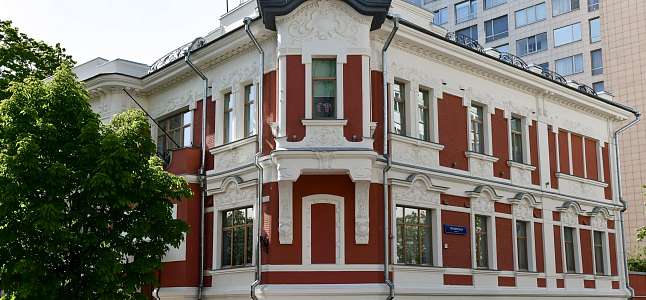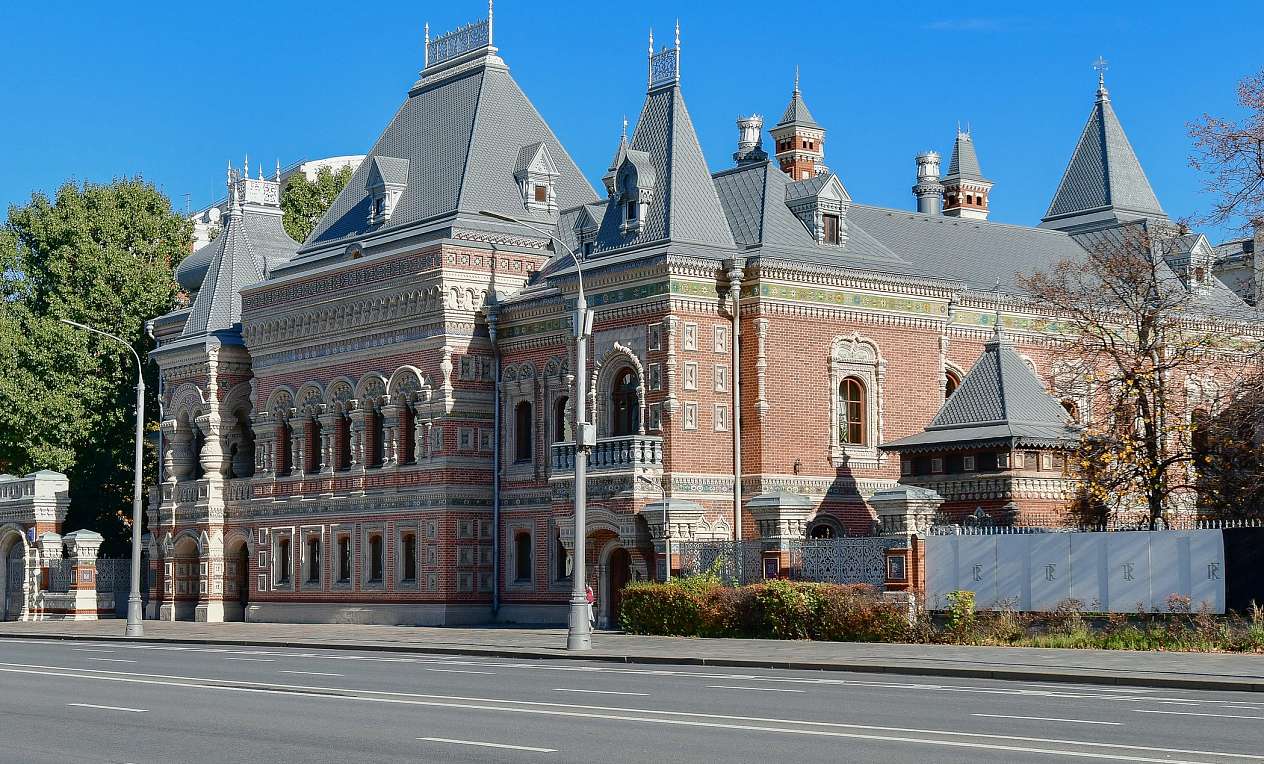
Igumnov House

Residence of the French Ambassador
The house was built in the late 1880s on the order of Nikolai Vasilyevich Igumnov, the director and co-owner of a Russian major textile enterprise – the Yaroslavl Big Manufactory that was founded back in the early 18th century. Igumnov ordered the house to match his high status in society.
For working out the design of the building and its construction Igumnov invited his fellow countryman – Nikolai Ivanovich Pozdeyev, a young and talented architect who at the time held the post of the Yaroslavl city architect. Nikolai Pozdeyev was not known outside Yaroslavl, however, he caught Igumnov’s attention by his devotion to two styles: the “Russian” (one of the trends in the eclectic school that dominated at that time) and a version of classicism, the so-called “Louis XV style”. Igumnov liked both styles as he, on the one hand, regarded himself Russia’s patriot, and on the other – like any merchant, was attracted to pompous luxury, he wanted it to be “like in Paris.”
The pseudo-Russian style was chosen for the building. Moscow’s GUM State Department Store building, the Historical Museum, Polytechnic Museum that were built in the same design are rightfully considered the Russian capital’s decoration features. This architectural style was inspired by the image of Russian wooden palaces, the outstanding example of which was the semi-legendary palace of Czar Alexei Mikhailovich (Alexis) in Kolomenskoye that burnt down in the 18th century.
The palace of the “textile king” Igumnov expresses abundance, first of all. The numerous Old Russian-style decorative components: arches with drop ornaments, “pot-bellied” columns, ceramic insets, combination of brick and stone, high hipped roofs – emphasize the building’s composite nature, like indicating the complexity of its owner’s personality. All in combination gives the impression of elation and harmony, which is so rare in the architectural style of eclecticism.
The main entrance to the building is designed as a “red porch” topped with a hipped roof. The tall double doors open directly into the hall with the grand staircase that has striking multi-color fanciful ornament, which continues the idea of the facade. The high vaulted ceilings, painted with golden wavy lines resemble the church architecture, which was also a source of inspiration for Pozdeyev. The talent of the architect created an atmosphere of Russia’s medieval epic and at the same time presaged later designs of Moscow Art Nouveau artists.
The carved oak staircase leads up to a suite of dwelling rooms: the living rooms, dining rooms, a study, a boudoir and a bedroom. Right after the massive doors leading up to the Big Living Room, the architect completely changes the style, immersing the visitor into the European classic atmosphere. The Louis XV style furniture and magnificent tapestries of the 17th century emphasize the room’s French spirit. Like a hundred years ago, this spacious room is also today used for ceremonial receptions and balls. The bright, ivory white walls and large window openings create a mood of festive elegance. The adjacent to the living room small lounge is furnished in the Louis XVI style, and a small dining room is decorated with the Empire era style furniture and fabrics. The great hall, with a very low-key style and sparingly furnished, bears the medieval design, owing to its low vaulted ceiling.
After the 1917 Revolution, the mansion was used for various purposes – it housed a medical center, then a working men’s club. One of the new owners of the mansion planned to demolish the internal partitions in order to make the house “lighter and more spacious”, but the fortune favored the work of Pozdeyev. In 1938, the building was transferred to the French Government for accommodating the embassy. A team of experienced restorers was invited from France to renovate the building. The sophisticated Parisian architects were greatly impressed by the house. One of them wrote: “This building is unique in its kind. Its design in every way counters our usual ideas. Despite this ... you cannot find a way to alter it without being funny, interfering with its vintage look.” Therefore, the restoration was carried out very delicately, the interior design items, furniture were selected with great care and, as a result, the house acquired the “Parisian chic”, in addition to its merchant luxury.
